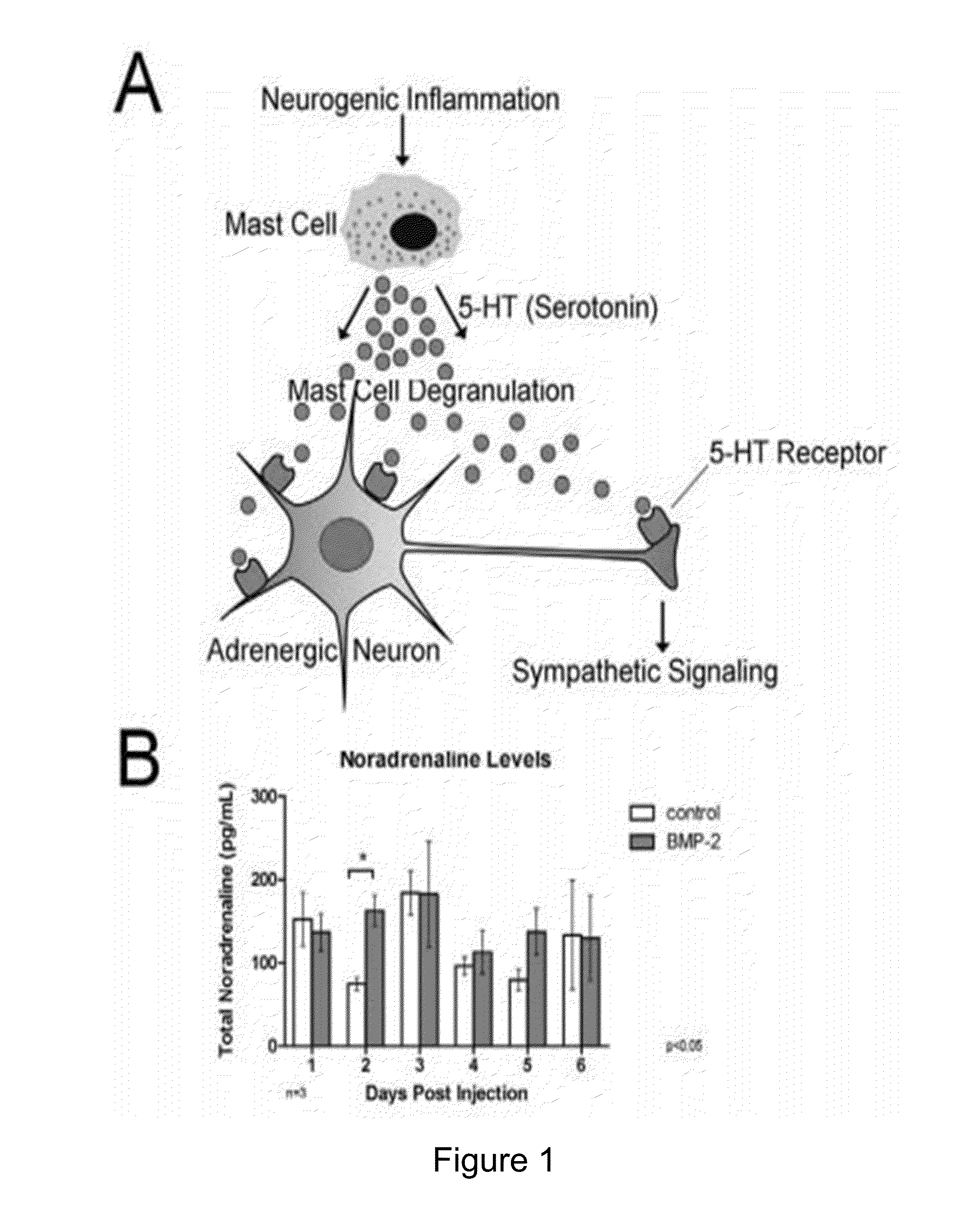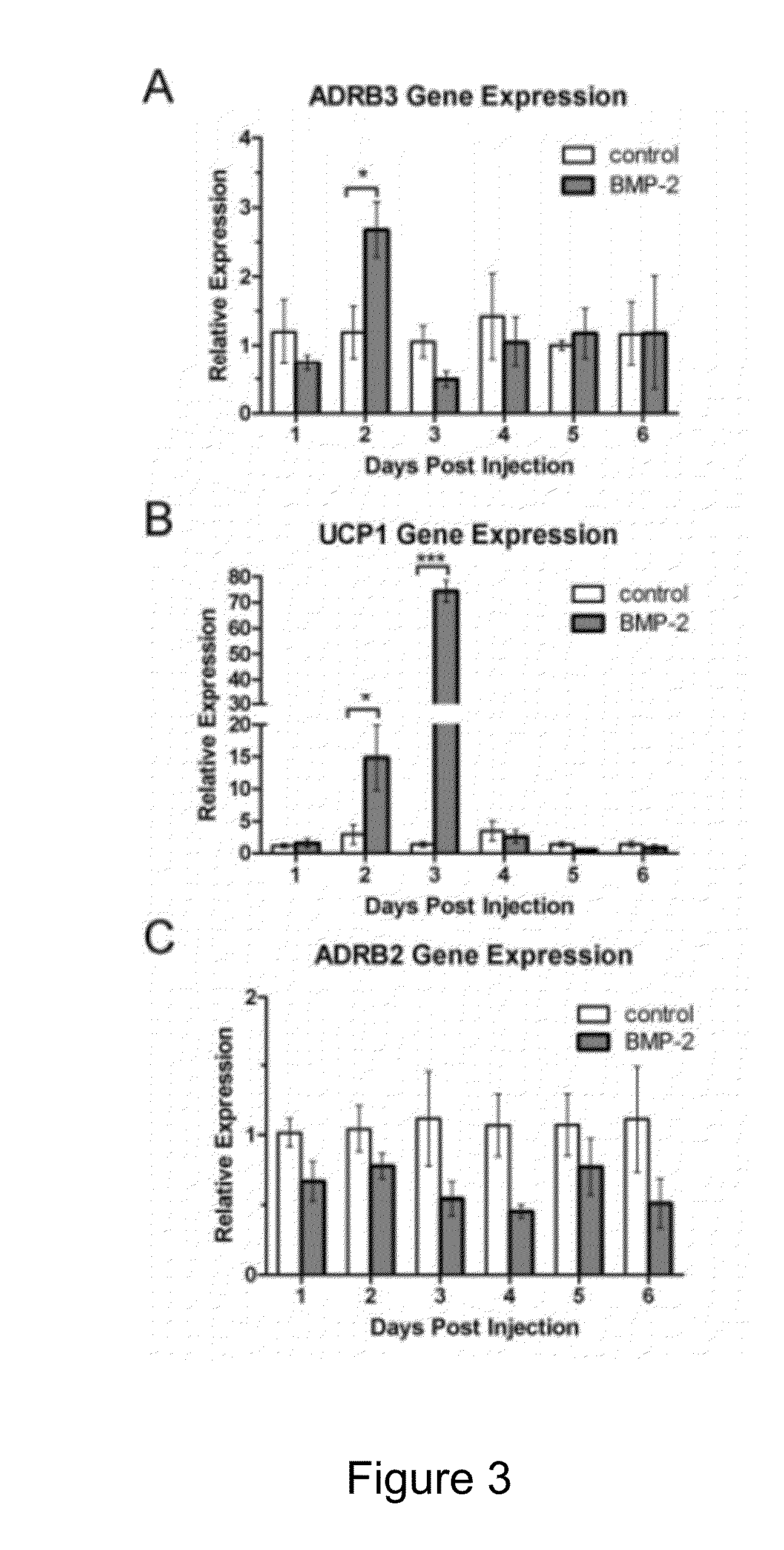Perineurium Derived Adult Stem Cells and Methods of Use
a stem cell and perineurium technology, applied in the field of perineurium derived adult stem cells and methods of use, can solve the problems of unclear progenitors that are stimulated to undergo brown adipogenesis and the nature of progenitors responding to sns signaling
- Summary
- Abstract
- Description
- Claims
- Application Information
AI Technical Summary
Benefits of technology
Problems solved by technology
Method used
Image
Examples
experimental examples
[0154]The invention is further described in detail by reference to the following experimental examples. These examples are provided for purposes of illustration only, and are not intended to be limiting unless otherwise specified. Thus, the invention should in no way be construed as being limited to the following examples, but rather, should be construed to encompass any and all variations which become evident as a result of the teaching provided herein.
[0155]Without further description, it is believed that one of ordinary skill in the art can, using the preceding description and the following illustrative examples, make and utilize the compounds of the present invention and practice the claimed methods. The following working examples therefore, specifically point out the preferred embodiments of the present invention, and are not to be construed as limiting in any way the remainder of the disclosure.
example 1
Brown Adipocyte-Like Cells (BALCs) Derived from Peripheral Nerves in Response to BMP2
[0156]One of the earliest in vivo responses to BMP2 delivery in skeletal muscle is the rapid, but transient, appearance of brown adipocyte-like cells (BALCs). BALCs can rapidly lower local oxygen tension during aerobic respiration through uncoupling the ATP synthase step of electron transport by uncoupling protein 1 (UCP1), resulting in heating that further reduces oxygen tension. Recent studies suggest that BALCs are generated in response to noradrenaline binding to β-adrenergic receptors 3 (ADRB3) on precursors after activation of the sympathetic nervous system (SNS). In these studies, AdBMP2 transduced cells were injected into skeletal muscle, which led to a significant elevation in noradrenaline within the mouse circulation 48 hours later. Changes in noradrenaline were followed by an increase in ADRB3+ cells within the perineurial region of peripheral nerves surrounding the site of BMP2 delivery...
example 2
Presence of UCP1+ Brown Adipocytes Stem Cells in the Perineurium of Peripheral Nerves
[0197]BMP2 can induce neuro-inflammation in dorsal root ganglia cultures and plays a key role in nerve patterning in the embryo. Previous studies suggest that BMP2 asserts direct effects on peripheral nerves in vivo, leading to release of inflammatory mediators substance P and calcitonin gene related protein (CGRP) (Salisbury et al., 2011 Journal of cellular biochemistry 112:2748-2758). BMP2 (approximately 20 ng per day) similar to physiological release of the protein during fracture (Fouletier-Dilling et al., 2007 Hum Gene Ther. 18: 733-745) was delivered by way of delivery of cells transduced with AdBMP2. These AdBMP2-transduced cells survived in the tissue at the site of injection for approximately 6 days (Olmsted-Davis et al., 2002 Human gene therapy 13: 1337-1347; Gugala et al., 2003 Gene therapy 10: 1289-1296). Within 48 hours after delivering BMP2, mast cells within the peripheral nerves adja...
PUM
| Property | Measurement | Unit |
|---|---|---|
| Biocompatibility | aaaaa | aaaaa |
Abstract
Description
Claims
Application Information
 Login to View More
Login to View More - R&D
- Intellectual Property
- Life Sciences
- Materials
- Tech Scout
- Unparalleled Data Quality
- Higher Quality Content
- 60% Fewer Hallucinations
Browse by: Latest US Patents, China's latest patents, Technical Efficacy Thesaurus, Application Domain, Technology Topic, Popular Technical Reports.
© 2025 PatSnap. All rights reserved.Legal|Privacy policy|Modern Slavery Act Transparency Statement|Sitemap|About US| Contact US: help@patsnap.com



